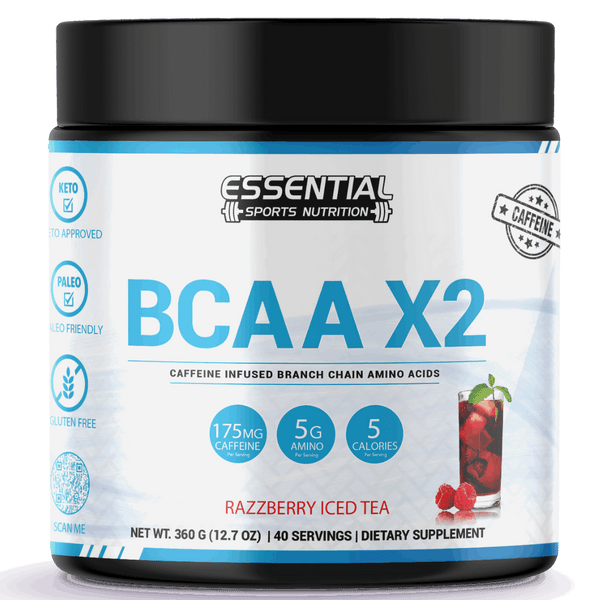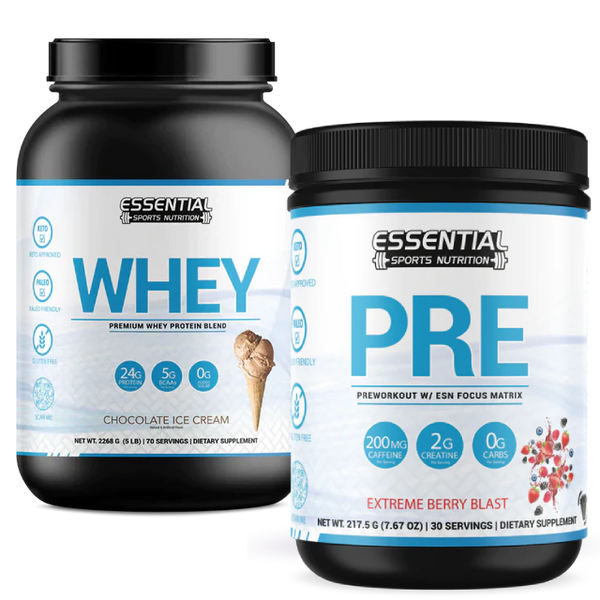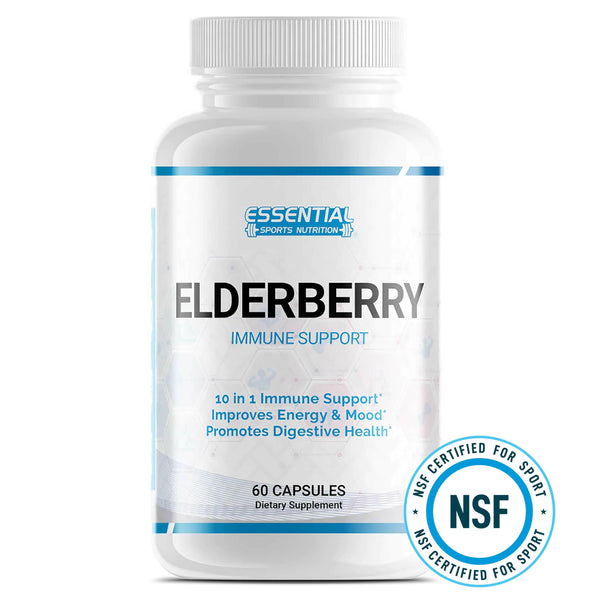Understanding the Dangers of Vitamin Overdose and Toxicity in Children
If you're concerned about vitamin toxicity in your child, be vigilant for symptoms such as nausea, vomiting, muscle weakness, and notable behavioral changes like increased irritability or difficulty maintaining balance. Fat-soluble vitamins (A, D, E, K) pose higher risks as they can accumulate in the body, potentially leading to more severe conditions such as hypercalcemia, especially with Vitamin D. Immediate medical attention is vital if you observe any severe symptoms like vomiting, confusion, or an irregular heartbeat. Awareness of appropriate vitamin dosages and symptoms will equip you to manage your child's intake better and safeguard their safety.

Key Takeaways
Watch for nausea, vomiting, and muscle weakness as early signs of vitamin toxicity.
Observe behavioral changes such as increased irritability or difficulty in balance.
Look for specific symptoms like confusion or irregular heartbeat, which require immediate medical attention.
Fatigue and dehydration can indicate an overdose of vitamin D in children.
Secure storage of vitamins and proper dosing are essential to prevent toxicity.
Recognizing Vitamin Toxicity
Identifying vitamin toxicity in children is essential, as symptoms like nausea, vomiting, and muscle weakness can indicate serious health risks associated with overdosing on certain vitamins. When you're monitoring your child's health, it's vital to recognize these signs early to mitigate potential damage from excessive vitamin intake.
Vitamin toxicity results from ingesting higher-than-recommended doses of vitamins, particularly fat-soluble ones such as A, D, E, and K, which accumulate in body tissues. Water-soluble vitamins like B and C are generally less risky as they are excreted through urine, though they can still cause adverse effects in high doses. For instance, excessive vitamin A can lead to vision issues, while too much vitamin D might result in kidney problems.
Prevention is key in avoiding these dangerous scenarios. Be sure you're using age-appropriate, hard chewable, or liquid vitamin preparations, and keep all supplements out of children's reach. Always follow the dosage guidelines provided by healthcare professionals. If you suspect an overdose, having Poison Control's contact information (800-222-1222) readily available can facilitate swift action, which is essential in preventing long-term health issues from vitamin toxicity.
Common Signs and Symptoms

When your child exhibits unusual physical symptoms such as persistent nausea, sudden vision issues, or unexplained muscle weakness, it might indicate vitamin toxicity. Behavioral changes, including increased irritability or difficulty in maintaining balance, are also key indicators. These symptoms demand a careful evaluation of your child's vitamin intake and prompt medical consultation to rule out potential toxicity.
Identifying Physical Symptoms
Children's bodies may react adversely when exposed to excessive vitamins, displaying symptoms such as nausea, vomiting, and muscle weakness. These physical symptoms of a vitamin overdose can escalate quickly, necessitating prompt action. Each vitamin can manifest differently; for instance, too much vitamin D might lead to kidney problems, while excessive vitamin A can cause vision changes and skin flushing. If you suspect a child overdose, it's critical to recognize these signs early. Symptoms like stomach pain, constipation, and difficulty walking are glaring indicators of potential toxicity. Immediate consultation with Poison Control or a healthcare provider is advised to manage the situation and prevent further complications. Always monitor for any unusual physical changes after high vitamin intake.
Behavioral Change Indicators
Beyond the physical manifestations, you should also be vigilant for behavioral change indicators—such as irritability, mood swings, and unusual aggression—which may signal vitamin toxicity in your child. These subtle symptoms are critical in recognizing potential overexposure to vitamins.
Irritability and Mood Swings: Fluctuations in mood, especially pronounced irritability, might be more than just typical child behavior.
Hyperactivity and Restlessness: An increase in your child's energy levels that seems constant and is coupled with an inability to sit still could be indicative of toxicity.
Fatigue: Conversely, if your child is experiencing unusual levels of fatigue or lethargy, it's worth considering if there's an excess intake of certain vitamins.
These behavioral changes require careful attention; if observed, a consultation with a healthcare provider is advised.
Vitamin D Toxicity and Overdose Risks
Excessive vitamin D intake can lead to severe health risks, including hypercalcemia, where serum levels surpass 100 ng/mL. As a parent, you're responsible for monitoring your child's vitamin intake, and it's essential to understand the potential overdose risks associated with vitamin D. In children, symptoms of vitamin D toxicity might manifest as fatigue, dehydration, and even kidney stones. These are serious indicators that the body is struggling with an excess of this otherwise beneficial vitamin.
The management of vitamin D overdose involves several steps. To begin with, you should immediately discontinue any further vitamin D intake. Medical professionals might employ activated charcoal to prevent further absorption of the vitamin from the gut. Treatments such as furosemide, prednisone, and calcitonin accelerate the excretion of excess calcium from the blood, while fluid therapy helps rehydrate the body and facilitate calcium excretion.
It's imperative to approach vitamin D supplementation with caution. Adhering to the recommended dosages can prevent the onset of toxicity. Always consult healthcare providers before starting or adjusting vitamin D supplements, especially in pediatric cases where the margin for error is significantly small.
Safe Vitamin Dosages

While understanding the risks of vitamin D overdose is essential, knowing the safe dosages to maintain your child's health is equally important. Vitamin D is pivotal in children's development and maintaining strong bones and teeth. Ensuring they receive the appropriate amount can prevent various health issues without risking toxicity.
The recommended daily dose of vitamin D varies by age:
For infants aged 0-12 months, the safe dosage is 400 IU /day. This amount supports early growth and skeletal development.
Children between 1 to 18 years should receive 600 IU /day. This dosage is crucial for maintaining bone health and aiding in normal growth patterns.
Accurate dosing is key. Using a reliable supplement ensures that these levels are met without exceeding them, which is critical for avoiding adverse effects.
When considering vitamin D supplementation, it's important to adhere strictly to these guidelines. Over-supplementation can lead to toxicity, hence the need for cautious administration. Always consult with a healthcare provider to tailor the need based on individual health conditions and dietary intake. This proactive approach will support your child's health while preventing potential complications from excessive intake.
When to Seek Medical Help and Treatment Options

If your child exhibits symptoms such as vomiting, confusion, or an irregular heartbeat after consuming vitamins, seeking immediate medical attention is crucial. These signs may indicate a vitamin overdose, a serious medical condition that requires prompt intervention to prevent severe health complications.
Vitamin overdose can occur when a child ingests excessive amounts of key nutrients, particularly vitamins such as A, D, iron, or calcium. The manifestations of toxicity can vary, but common symptoms include gastrointestinal distress, neurological changes, and cardiac irregularities. Each symptom signals an acute response from the body to the excessive intake of these nutrients.
When you notice any signs of potential vitamin overdose, do not hesitate to act. Contacting Poison Control at 1-800-222-1222 can provide immediate expert guidance on managing the situation while seeking medical help. The specialists at Poison Control can advise on critical first steps and will likely recommend that you take your child to an emergency medical facility for evaluation and proper treatment.
Treatment Options Available
Upon suspecting vitamin toxicity in a child, immediate cessation of vitamin intake is the foundational step in treatment. If you're concerned that your child has been exposed to excessive levels of Vitamin D or other supplements, it's vital to halt further consumption and seek medical attention promptly. Treatment strategies focus primarily on mitigating symptoms and preventing further absorption of the toxic vitamin.
Here are key treatment options you should be aware of:
Activated Charcoal: This is often administered to absorb excess vitamins still present in the stomach, reducing further absorption into the bloodstream.
Medications like Furosemide and Prednisone: These are used to manage specific symptoms and complications of vitamin toxicity, such as hypercalcemia, which can occur with excessive Vitamin D intake.
Fluid Therapy and Calcitonin: In severe cases, these treatments help stabilize the child, with fluid therapy addressing dehydration and calcitonin used to lower high calcium levels that might have resulted from the toxicity.
Throughout the treatment process, monitoring calcium levels and providing supportive care are essential to ensure your child's condition stabilizes and improves. Always follow the guidance of healthcare professionals who can tailor the treatment to your child's specific needs.
Preventing Vitamin Overdose

After addressing treatment options, it's equally important to focus on how you can prevent vitamin overdose in children. Given that over 80% of vitamin overdose cases involve children under 6, the stakes are high. With symptoms ranging from nausea to vision problems, prevention is vital.
Firstly, consider the form of vitamins you're using. Gummy vitamins are particularly appealing to children but pose a greater risk due to their palatable taste and resemblance to candy. Opting for hard chewable or liquid vitamins might reduce the risk of accidental overdose. These forms are less likely to be consumed in excess due to their less candy-like nature.
Moreover, secure storage of all vitamin supplements is essential. Treat these as you would any medication: out of reach and out of sight of young children. A locked cabinet is ideal to prevent unsupervised access.
Always have the poison control number readily available in case of an emergency. This quick reference can be a lifesaver, providing immediate advice and directing you to the nearest medical help if symptoms of overdose appear. Remember, prevention is not just about avoiding excess but ensuring safety through mindful practices and preparedness.
Educating Parents and Caregivers

As you navigate the complexities of your child's health, it's essential to recognize the early warning signs of vitamin toxicity, such as sudden vision issues or muscle weakness. Understanding and adhering to dosage guidelines can greatly mitigate the risk of over-supplementation. Additionally, it's imperative to consult trusted resources for accurate and up-to-date information on vitamin safety for children.
Recognizing Early Warning Signs
Educating yourself about the early warning signs of vitamin toxicity can be essential in preventing serious health complications in children. Recognizing symptoms early on allows for quicker intervention and reduces the risk of severe consequences from an overdose.
Nausea and Vomiting: Often initial indicators of vitamin toxicity, these symptoms can escalate quickly in children.
Vision Problems: Specific vitamins in excess, such as Vitamin A, can lead to significant visual disturbances.
Muscle Weakness and Difficulty Walking: These signs, particularly linked with excessive Vitamin D, underscore the importance of monitoring intake levels.
Being vigilant about these signs is vital. If you suspect an overdose, it's imperative to seek professional medical advice immediately to address potential toxicity in your child.
Importance of Dosage Guidance
Recognizing the early signs of vitamin toxicity underscores the necessity for parents and caregivers to adhere strictly to dosage guidelines. You must understand that the recommended dosage of children's vitamins is crucial to maintaining their health and preventing poison risks associated with overdoses. Here's a detailed table to help you grasp the importance of this guidance:
| Aspect | Importance |
|---|---|
| Age Appropriateness | Guarantees doses are safe for specific age groups. |
| Type of Vitamin | Different vitamins have varied dosage limits. |
| Storage & Administration | Proper handling prevents accidental overdoses. |
Always follow the guidelines provided by health professionals to safeguard your child's well-being. Ignoring these may lead to severe health consequences.
Resources for Accurate Information
To adequately protect your children from the dangers of vitamin overdose, acquiring and comprehending accurate, scientifically validated information on vitamin usage is essential. As prevention is key, here are some reliable resources:
Centers for Disease Control and Prevention (CDC): Offers guidelines and statistics on vitamin intake and safety.
American Academy of Pediatrics: Provides detailed recommendations on vitamin consumption for children.
Poison Control: Immediate advice and assistance in cases of potential vitamin overdose, especially relevant with gummy vitamins.
These resources can help you understand the risks associated with vitamin overdose in children and offer practical advice on how to prevent such incidents. Always ensure that vitamins are stored securely and out of reach from little hands.
Conclusion

In the garden of health, each nutrient is like a unique flower. Too much water—too many vitamins—can drown their beauty, leading to toxicity. Distinguish the signs: nausea, fatigue, and more. Remember, moderation is key. Just as a gardener knows to measure water precisely, so should you gauge vitamin intake. Seek professional guidance when the plants of your garden wilt unnaturally. Cultivate wellbeing thoughtfully, ensuring the vibrant growth of your child's health without overwhelming their delicate system.
Pediatrics Vitamin Toxicity FAQs
Q: What are the signs of vitamin toxicity in children?
A: Vitamin toxicity in children can present with various symptoms, including anorexia, severe hypercalcemia, and gastrointestinal disturbances, and may lead to the development of symptoms related to vitamin D toxicity.
Q: How can vitamin toxicity be diagnosed in children?
A: The diagnosis of vitamin toxicity in children is usually based on clinical presentation and serum vitamin concentrations and may involve consultation with a pediatrician or a pediatric endocrinologist.
Q: Why is it important to be cautious with vitamin supplements in children?
A: Children are at an increased risk of developing hypervitaminosis due to their lower body weight and metabolism. Hence, it is important to carefully regulate the amount and type of vitamins they receive.
Q: Can over-the-counter multivitamins lead to vitamin toxicity in children?
A: Yes, over-the-counter multivitamin, if taken in large doses or in combination with other dietary supplements, can potentially lead to vitamin toxicity in children.
Q: What role does sun exposure play in vitamin D toxicity in children?
A: Sun exposure is a natural source of vitamin D, excessive exposure combined with high doses of vitamin D supplements can cause toxicity in children.
Q: How can vitamin toxicity be managed in children?
A: Management of vitamin toxicity in children may involve stopping the intake of the specific vitamin, providing supportive care, and in severe cases, consulting with a poison control center or healthcare provider.
Q: Are there specific vitamins or minerals that are more likely to cause toxicity in children?
A: Vitamin D, especially in large doses, is more likely to cause toxicity in children compared to other vitamins or minerals.
Q: What Are the Symptoms of Vitamin Overdose in Children?
A: If you're concerned about vitamin overdose in kids, watch for nausea, vomiting, liver issues, vision changes, muscle weakness, and nerve damage. These symptoms signal excessive intake of vitamins like A, D, and B.
Q: What Are the Symptoms of Vitamin D Toxicity in Children?
A: If your child has vitamin D toxicity, they may show signs like nausea, vomiting, weakness, frequent urination, and hypercalcemia. Watch for abdominal pain, confusion, and muscle weakness, which are serious symptoms.























